Clicks to bricks is a business model that blends online and offline shopping. Brick-and-mortar retailers use their ecommerce websites to attract customers, who purchase or collect their items in-store.
While some retail brands are sputtering, all the hype around the “retail apocalypse” is just that: hype. Physical retail isn’t dying, but retail as we know it is shifting beneath our feet.
Modern customers use a combination of channels when shopping for products. Many start their journeys online, where they can compare options from several retailers in a few clicks. Before they make their decision, though, they often want to see the product in the flesh. That’s the biggest advantage brick-and-mortar retailers have over ecommerce-only competitors.
Retailers with a multichannel strategy (like clicks to bricks) will generate $575 billion by 2023.
Interested in capturing a slice of that multichannel consumer spending? In this guide, we’re looking at how retailers can use clicks to bricks to drive online shoppers in-store.
What is a clicks to bricks strategy?
Clicks to bricks is the process of driving online shoppers toward your physical retail space.
Retailers can have shoppers browse an online catalog and purchase items in-store. Another option is online ordering and in-store collection, a model also known as click and mortar. Either way, the phygital retail experience starts online and ends in-store.
Going retail-only potentially means falling behind, especially when ecommerce takes a 21.3% stake of all retail sales. Combining both channels gives retailers the best of both worlds. There’s an option for every customer, regardless of where they prefer to shop.
Proof in the pudding: Our Omnichannel customers (folks who shopped in both our retail store and website) have a 2.5x higher LTV than both our repeat web-only customers, and repeat retail-only customers. Retail experience and trust + online convenience = loyalty & advocacy boost.
— Ben Sehl (@benjaminsehl) July 26, 2021
The benefits of a clicks to bricks strategy
Now that we know what a clicks to bricks retail strategy is, let’s take a look at the benefits of having one for your store.
Physical stores offer lower CAC
Customer acquisition costs (CAC) are on the rise. More businesses are flocking to online sales channels to capture new customers, meaning higher prices for already-limited advertising slots.
Running a retail store alongside your ecommerce website, however, gives you a significant advantage. Rent is now described as the new CAC.
As it relates to DTC, one of the big value propositions was originally lower prices due to lower costs: physical store leases and rent being the biggest. That’s now shifted so you have to spend money on FB/IG/Google ads to acquire customers … likely as much or more than you would be spending on rent and/or leases. So the price edge that original digitally native brands may have had … is gone.
With a physical location, you can use the space as a way to deliver in-person experiences that modern customers don’t get online. Those experiences are what drive shoppers back to the store, giving you a steady stream of physical shoppers without investing thousands into remarketing.
Click to bricks is important to use because in-store customers normally spend more money with our company and convert more due to them being able to speak with an actual person.
Every few months for the past 18-months I've been asking DTC startups "are you going to be opening more stores" and the answer kept being, "we're looking but haven't really signed any leases." Now, it finally feels like there's a major shift -- 2022 will be big for store openings
— Anna Hensel 👩💻 (@ahhensel) October 28, 2021
Capture local online shoppers
Speaking of customer acquisition, it’s risky to leave a customer’s decision of whether to enter your retail store by chance. Granted, you can use retail signage or secure a space in a high-traffic area (like a shopping mall), but many of the in-person tactics you’re using to drive foot traffic have a limited audience.
More people are online than ever before. Facebook has almost 180 million users; Instagram has 119 million. Make local customers aware of your store by using social media to drive them offline and into your store.
“The challenge is knowing which people to market your retail location to,” says Jeff Moriarty, marketing manager at Moriarty’s Gem Art.
“One of the most successful strategies we have is our pop-up, which targets people in a 20 mile radius of our store. This is done through an app, but promotes our retail store to anyone near our location that visits our website. We get a few people a week now that tell us they went to our website and had no idea that we were right in the same city. It has been a game changer for our brick-and-mortar location.”
💡 PRO TIP: Geotargeting is a great way to attract and convert shoppers that are within a radius of your store. Consider using location-based marketing to reach nearby shoppers. Once you launch your campaign, view the sales by billing location report in Shopify admin to see if online sales spiked near youre store.
Provide a local presence
Thinking of ditching your store and going ecommerce only? While an online presence opens you up to a larger volume of potential shoppers, some customers still enjoy visiting physical stores.
In fact, according to a commissioned Forrester Consulting study conducted on behalf of Shopify, almost half (47%) of consumers said that having a local presence was a significant or very significant influence on which brands they chose to purchase from in the past year.
My view is very simple: follow where the customer is. And the customer today is increasingly starting their journey online. And it’s been criminal for too long that brands don’t provide the same level of assistance or service they do in physical retail as they should be doing online.
The best part? You don’t need to open up your own store to raise brand awareness amongst local shoppers. Peloton, for example, partnered with Outdoor Voices to create a collaborative fitness clothing line. The new collection featured in 17 Peloton showrooms. It gave both brands extra visibility in locations where it didn’t already have stores.
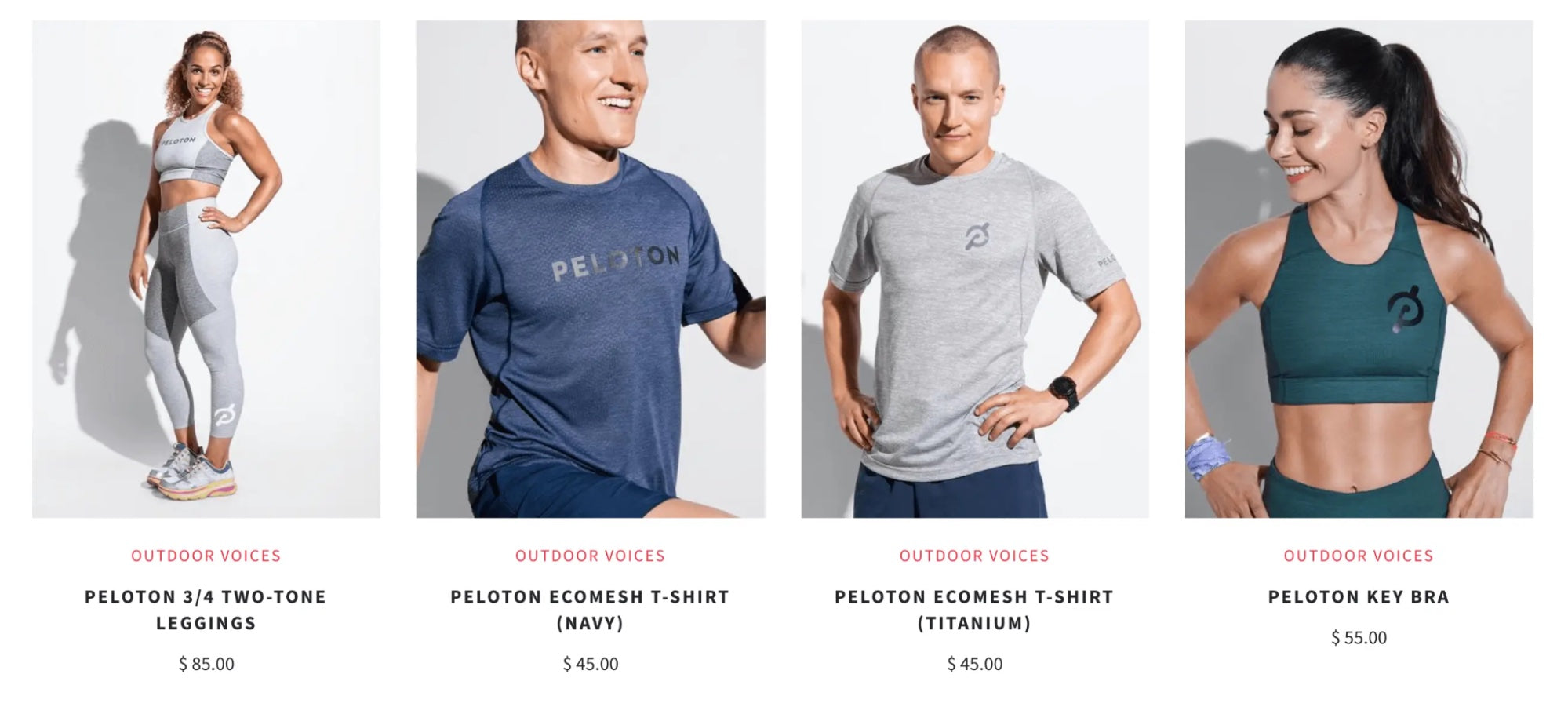
For the most productive pop-up shop, it is recommended to search for high foot traffic areas, such as malls, beachfronts, and conventions, or locations where there is a natural synergy between yours and the surrounding businesses. By using this click to bricks strategy, you can dramatically increase sales, keep costs down, and imprint your brand in the minds of consumers.
Offer showrooming experiences
A huge downside of online shopping is the fact you can’t see, touch, or interact with a product. It’s partly why return rates for ecommerce retailers are 11% higher than for retail stores. A whopping 22% of online returns happen because customers felt a product looked different in real life.
A clicks to bricks strategy, however, gives you the opportunity to build confidence with your potential customers. And you don’t need a huge store to do it.
Showrooming works by running a reduced inventory store stocked only with your best-selling products. Online shoppers visit the store and see what the item looks and feels like in real life. Once they give the purchase the green light, they can either:
- Scan a QR code for the product they’ve tried in-store. The code then directs them toward the product page on your ecommerce website.
- Have a retail store associate email a personalized shopping cart for the in-store shopper to complete their purchase online.
📌 GET STARTED: Use Shopify POS email carts to send shoppers pre-loaded shopping carts by email that include the products they were interested in while shopping in-store. If the shopper completes the purchase online via the email, the retail store (and the associate who sent the email cart) gets credited with the sale.
The challenges of clicks to bricks
While clicks to bricks does have its advantages, there are some challenges to be aware of when implementing the strategy for your brick-and-mortar store.
Hiring and retaining employees
Having an online-only store gives you greater flexibility over the people you hire. Plus, by ditching the “bricks” part of your clicks to bricks strategy, you’ll also avoid high staff turnover rates. Retailers lose 60% of their employees, compared to the average of 19% across all industries.
Not only is hiring replacement employees frustrating, it’s also a costly job. Alongside their $13.53 average hourly salary, expect to pay between 33% and 50% of a sales associates’ annual salary in recruitment and training costs to replace them.
Omnichannel inventory management
Another huge challenge of the clicks to bricks strategy is managing inventory across several sales channels.
You never want to be in the position where a customer views your product online, comes to view it in-store, and leaves empty handed because the product wasn’t actually available. These stockouts cost retailers $1 trillion per year.
Work around this by using a point-of-sale (POS) system that combines data from all sales channels. Shopify POS, for example, acts as a single source of truth. Inventory levels change when stock is sold through either your online store or physical location. You’ll never promise out-of-stock items to shoppers who’ve travelled to buy it in-store.
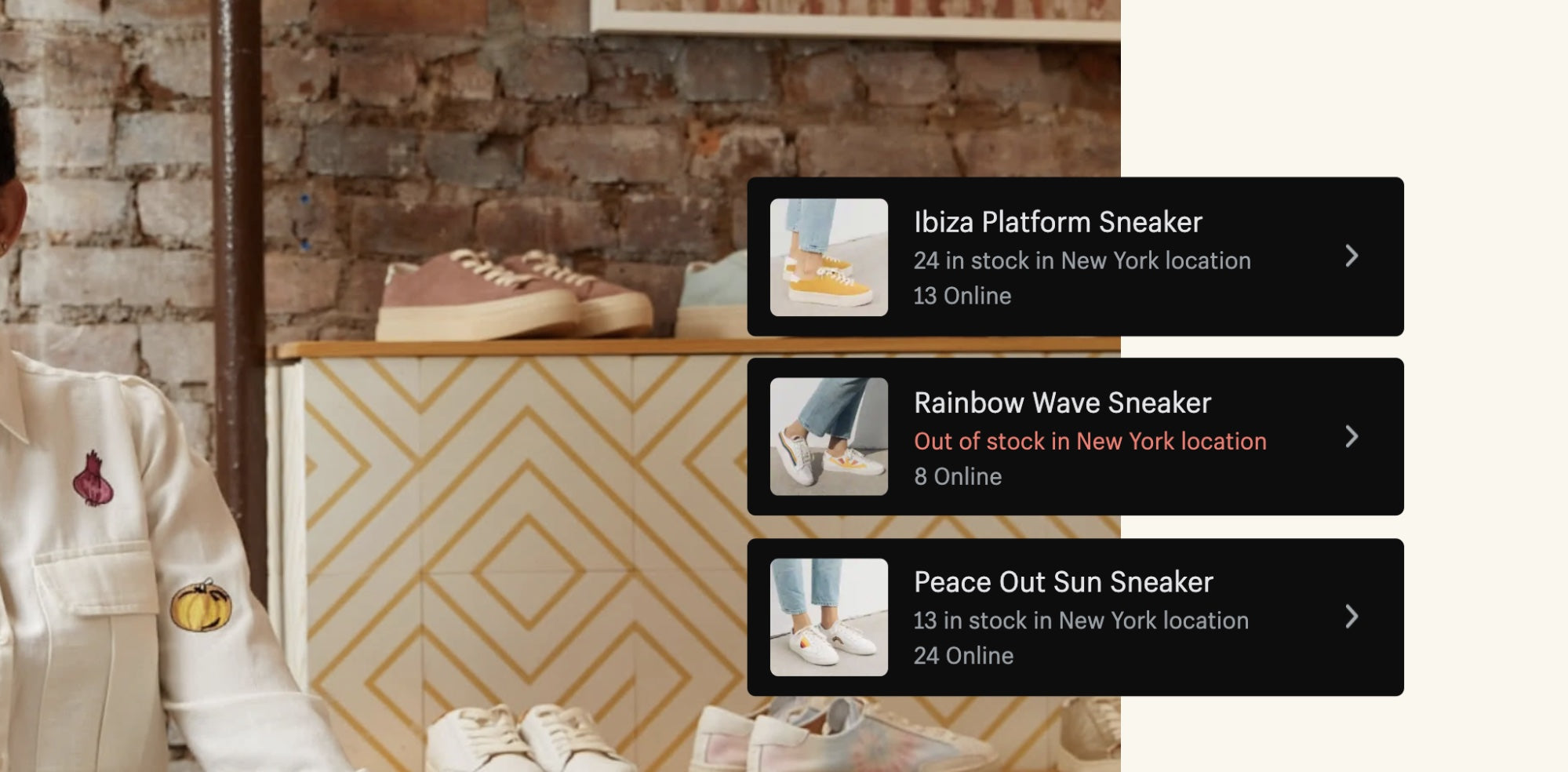
Maintaining brand consistency
Regardless of where and how you sell products, consistency is key. Customers expect the same shopping experience amongst each channel they interact with you through, including your online store, social media platforms, and brick-and-mortar stores.
That’s tough when you physically can’t be in multiple places at once—hence why retail staff training is crucial for brands with a multi-channel strategy like clicks to bricks. Make sure your online and offline experiences match by arming store associates with product knowledge shoppers will find on your online store.
Similarly, continue the same branding across each channel. Clicks to bricks customers who visited a retailer’s store after purchasing online said product availability and store decor played a large role in maintaining consistency across both channels.
In short: You never want shoppers to land on your site, visit a store, and question if they’re in the right place.
Gathering customer data in person
“As more online stores venture into the brick-and-mortar space, many are failing to take advantage of the data they have collected in their virtual one,” says Jeff Meeks, VP of sales and marketing at EnergyFit. “This comes from the flawed approach of viewing physical stores solely as a way to enhance online sales, rather than the other way around.
“To correct this issue, ecommerce retailers need to organize their data into categories to better serve their customers. Using data to prepare orders to deliver on site, bringing items popular to a specific area, or studying previous purchases to determine price ranges that match area demographics are all ways to increase sales.”
Shopify merchants can easily do this with the tools they’re already using. Analyze data from your POS, which syncs with your ecommerce back end, so you can follow shoppers as they purchase online and offline.
“In addition, data provides a great opportunity to upsell, with 32% of all clicks-to-bricks shoppers stating that they make other purchases in addition to their original one,” Jeff says. “By reverse engineering your data, you can enhance revenue streams in your offline space.”
The future of clicks to bricks
Still undecided on whether to take this approach for your store? Let’s take a look at why clicks to bricks plays a huge role in the future of retail.
Increasingly popular among digitally native brands
A few years ago, it was easier to build an ecommerce business. But the oversaturation of online channels—particularly social media—means it’s harder than ever to cut through the noise and reach online shoppers.
This means many online retailers are taking steps back into traditional retail. Kohara + Co, Texas Tushies, and House of Novogratz are three DTC brands opening physical stores that sit alongside ecommerce websites to cater to people who prefer in-store shopping.
The new House of Novogratz on Abbot Kinney will give us the opportunity to expand the Novogratz brand footprint and to reach new audiences through partnerships, collaborations, and activations that happen instore and online.
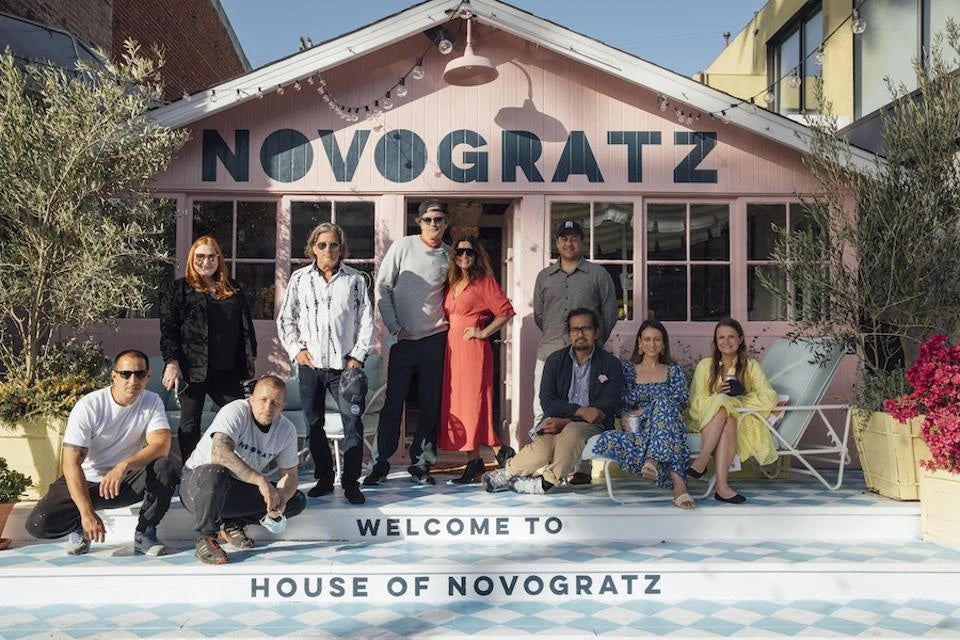
Cheap leasing and rent
Speaking of new store openings, many DTC brands are opening brick-and-mortar stores because it’s cheaper for them to do so.
According to Statista, “Vacancy rates have increased across a number of sectors in the US during 2020, but none more so than the retail industry.” This means there is plenty of opportunity to find the perfect retail space.
Not only that, the cost to lease a retail store is comparable to many businesses’ advertising budgets. Retail rent prices decreased by 0.7% in 2021—the first decline in nine years. It’s often cheaper for retailers to run a brick-and-mortar store instead than to invest thousands of dollars into online customer acquisition.
Modern retail strategy, a timeline:
— Web Smith (@web) July 10, 2021
2000: department stores
2010: direct-to-consumer
2020: DTC + owned stores
Customers want in-store experiences
The clicks to bricks business model gives retailers the opportunity to deliver customer experiences that ecommerce can’t. Experiential retail caters to the 76% of people who’d prefer to spend their money on experiences over products.
According to Mark Teperson, Chief Strategy Officer at Afterpay, “Three times as many Gen Zers said they shop most of the time in a store compared to the number who said they shop most of the time online.”
It’s why 32% of brands said they’d be establishing or expanding their use of pop-up and in-person experiences in the next year, while 31% said they planned on establishing or expanding their physical retail footprint.
Some of my most favorite retail experiences have been offline. What I look for as a modern consumer is value. I don’t mean value in terms of pricing value. I mean experience value.
“Online-first merchants were some of the first to figure that retail stores need to adapt to a new buyer journey that often begins on Instagram, continues to their online store, and includes a ton of upfront research into their brand and products,” says Arpan Podduturi, Shopify’s Director of Product, Retail.
“These merchants built their online stores to serve shoppers at any stage in their journey and now they’re bringing that thinking to their retail stores.
“Their in-store experience isn’t designed just to make sales within their four walls,” says Arpan. “The experience is about driving connection and conversation, while giving their shoppers a chance to touch and feel their products. And, ideally, that can turn one-time shoppers into brand ambassadors.”
Take it from LIVELY, the lingerie retailer that offers in-store fittings for customers to find their perfect size. Almost a third of its in-store revenue comes from those clicks to bricks customers. “We’re talking about a product that is very intimate, so the experience needs to match that,” founder Michelle Cordeiro Grant says.

What businesses need a store? Is it for discovery? Is it for retention? Is it for community? If it is a place that is an identical experience to one’s mobile or web experience, I would probably argue it’s not terribly helpful. If it’s additive to the experience, if there’s something truly unique, then I think that really resonates.
Customers expect seamless shopping experiences
We’ve briefly touched on the fact that brand consistency is a challenge for clicks to bricks retailers. Modern customers demand shopping experiences be seamless across the various channels they’re using.
Options like buy online, pickup in-store (BOPIS) and curbside delivery are becoming increasingly popular. Three quarters of online shoppers choose those in-person collections over traditional shipping, largely because it’s more convenient. Shoppers don’t have to wait or pay for delivery on items they’ve ordered online.
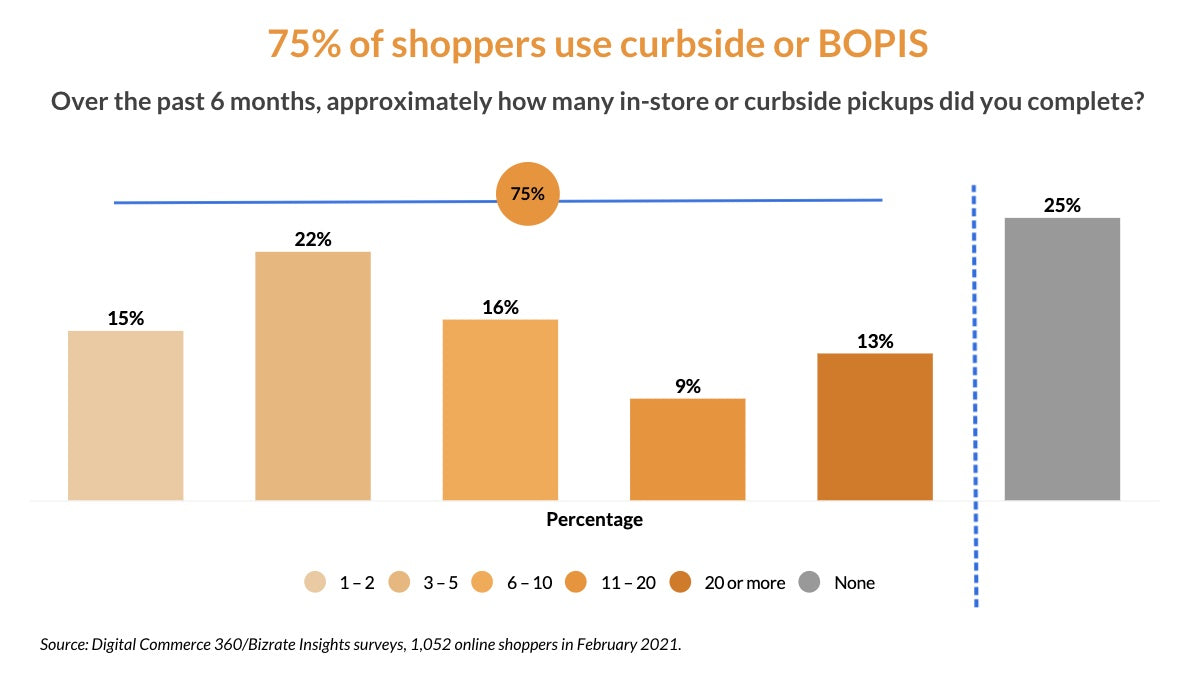
As part of your clicks to bricks strategy, offer a click to mortar service like BOPIS or in-store pickup. Incentivize online shoppers to take those options by offering them for free (as opposed to $2.99 two-day delivery).
Once they visit your store, there’s the potential to upsell other items at the collection desk, increasing revenue and continuing the shopping experience across both online and offline channels.
3 clicks to bricks examples
Here are three shining examples of brands who use their clicks to bricks strategy to drive online shoppers toward a retail store.
Casper
Casper is the go-to case study for direct-to-consumer business owners.
The mattress store originally operated online only. But it’s hard to choose a mattress online. The base you’re sleeping on for a third of the day needs to be comfortable—something its shoppers can only be sure of by touching it in real life.
CEO Philip Krim says Casper’s customers are “going online to do their research. They’re walking into stores to aid their education. Oftentimes those are happening at the same time. People are on their phones reading about products while looking at them on the shelves.
“We really have to think about how to have multiple touchpoints and multiple facets of engaging with customers in a way that ultimately lets them buy wherever they want to buy that’s most convenient for them.”
“Think about building that in an infrastructure that’s channel-agnostic,” Philip says. “We’re just as happy if you buy Casper products through one of our retail partners as we are through our retail-owned and -operated stores, or on our ecommerce store.”
Now, the brand has over 70 stores for its online audience to visit and test a mattress. Experiential retail plays a huge role in those stores. The Dreamery was a storefront where sleep-deprived New Yorkers could sneak in a quick snooze for just $25 a session (all on Casper mattresses, of course).
Casper’s initiatives demonstrate how next-gen retailers are successfully leaning into immersive, in-person shopping experiences rather than mimicking the efficiency of buying online.
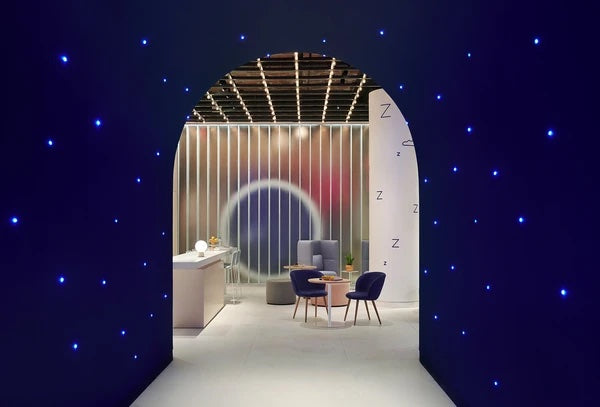
SITKA
SITKA is a specialized clothing retailer that recently opened its first 3,000-square-foot retail store in Bozeman, Montana. The brand uses its flagship store, named SITKA Depot, to give shoppers the opportunity to try on its latest products and lean on the skills of experienced staff.
SITKA’s store heavily prioritizes experiential retail, too. The physical location hosts seminars and community events, and has an in-store Revive and Repair service to repair damaged products—all of which nudge online shoppers away from their computers and into the store.
SITKA is built on a commitment to enhance the full life experience of the hunter, and our first retail store is an opportunity to expand on that principle. Customers will not only have the opportunity to build custom systems that work for their style of hunting, but also connect with others who share the same passion for the hunting life.
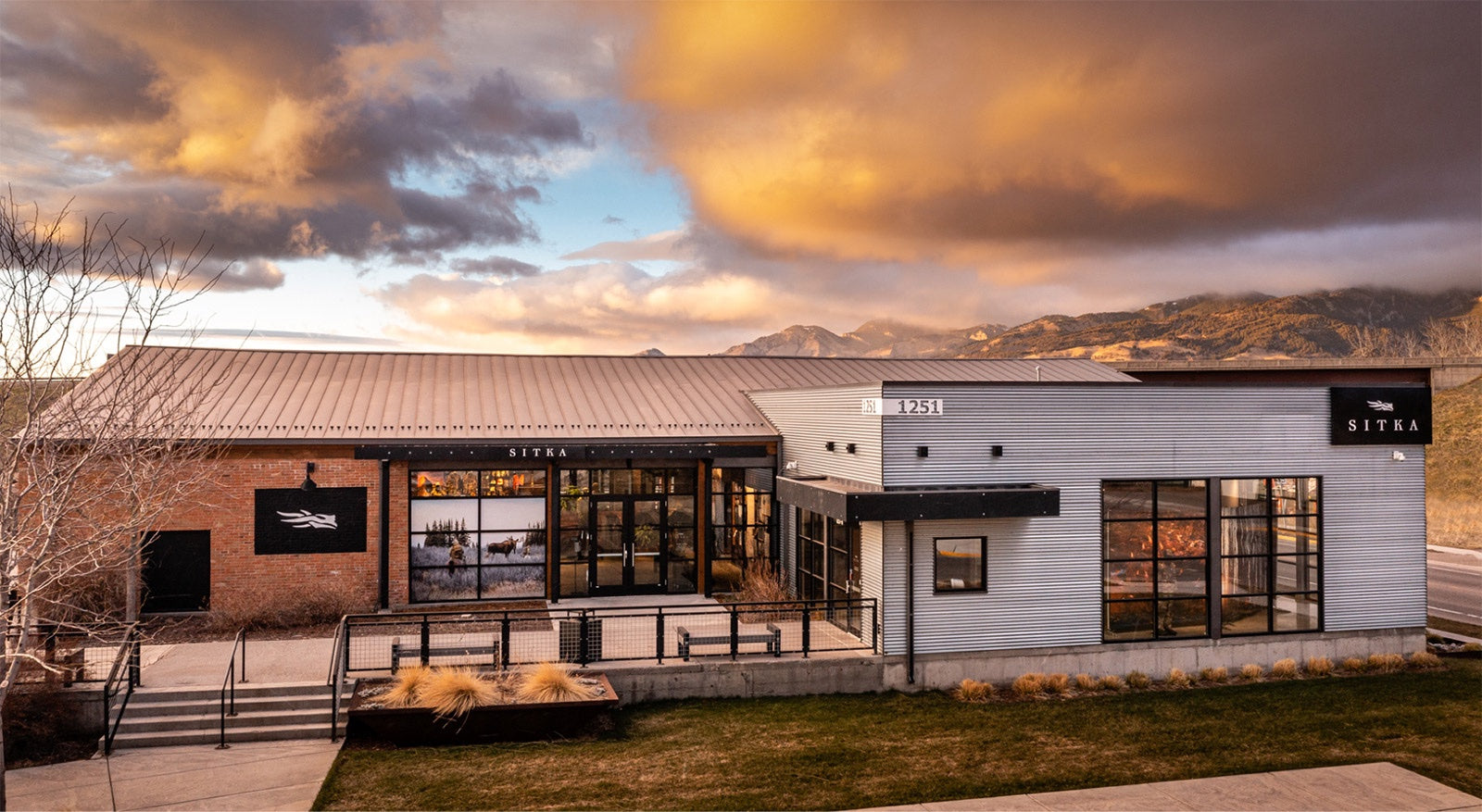
Adore Me
Online upstart Adore Me has plans to fundamentally change the way women shop for lingerie—and at the center of its strategy is hundreds of new physical locations outfitted with high-tech amenities and concierge-level service.
Adore Me quickly hit $100 million in sales in 2017, just five years after its 2012 founding. It’s now estimated to earn $52.2 million per year. While that hardly touches the $7 billion in revenue from legacy competitor Victoria’s Secret, that isn’t deterring Adore Me from aggressively carving out its own place in the market.
The brand’s flagship store opened on Staten Island in 2018, complete with a lingerie bar, light refreshments, and fitting rooms equipped with “smart mirrors” that make it simple to try various sizes right from your dressing room.
The retailer now has six other stores in cities like Chattanooga, Tennessee, and Natick, Massachusetts. It invites local influencers to visit the stores and share the experience with followers:
Here’s the kicker: Adore Me plans to open more storefronts in close proximity to existing Victoria’s Secret stores. Talk about keeping your enemies close.
Adore Me has succeeded where traditional brands have stalled, thanks to differentiators like a wide range of sizes, the availability of plus sizes, and its focus on comfort and quality. And the brand is leveraging cheap leases and a growing retail presence to lure more shoppers away from competitors.
Is clicks to bricks right for your business?
If you’ve been debating whether to take your online-only brand into physical retail, there’s no better time than now.
Customers are actively looking for merchants with brick-and-mortar stores they can visit to try items in the flesh. Combine that with the lower-than-usual cost of leasing a store and you’ll see why clicks to bricks is a business model rising in popularity.
Take a look at historical sales data for your store. Do most of your customers live in a concentrated area? Are many online-bought products returned because the item looked differently in real life? Both are telltale signs it’s time to consider a clicks to bricks retail strategy.
This post was originally written by Lindsey Peacock and has been updated by Elise Dopson.
Read more
- 20 Best Mobile Retail Apps to Seamlessly Run Your Store
- Small Storefront, Big Impact: Distinguish Your Brand with a Pop-Up Store at Expos
- Making the Leap to Retail: Why These Online Brands are Investing in In-Person Sales
- 8 Successful Examples of Pop-In Stores (And What You Can Learn From Them)
- 15 Tips to Help Retailers Snag Startup Funding
- Ultimate Guide to Pop-Up Shop Marketing for 2002
- Turn Passion Into Product: How 7 Retailers Found Success With In-Person Sales
- How These 4 Pop-Up Shops Went Viral (And How Yours Can Too)





